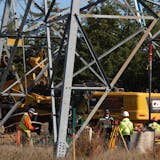Six stories of apartments will go up north of Broadway in Northeast. The two blocks west of the 38th Street light-rail station will be transformed by more than 200 new apartments. A four-story building with 49 apartments is under construction just off Interstate 35W on 35th Street.
Most new housing in Minneapolis is in or near downtown, Uptown and the University of Minnesota. But that's starting to change. Density is spreading to neighborhoods of single-family homes.
"It's an uncomfortable conversation that is most definitely worth having," said Mayor-elect Jacob Frey. "A world-class city that is affordable to everyone will require growth and additional housing stock."
Faced with a growing population, rising rents and little money to pay for low-income housing, the Minneapolis City Council is counting on the law of supply and demand to slow the rise of prices. They've cut several land-use regulations and regularly bend zoning rules so developers can build more multifamily housing in more places.
Now, with a mayor-elect who campaigned on greater housing density, and an incoming City Council with a mandate to address the city's lack of affordable housing, Minneapolis is poised for an era of upward growth — beyond downtown.
Density has its skeptics. Denis Houle, president of the Armatage Neighborhood Association in southwest Minneapolis, said he suspects demand for apartments won't keep pace with construction. And if single-family homes are replaced with apartments, he said, houses in the city will become more expensive.
"If people can't find a house in Minneapolis, then are they going to go to the suburbs?" Houle said. "I think we've had too much density for density's sake."
The big-picture case
Minneapolis has issued permits for 14,250 new homes in the past five years, 94 percent of them apartments or condos. But it still hasn't kept up with the demand. The rental vacancy rate is under 3 percent, and large portions of the city are too expensive for the lower-middle class.


